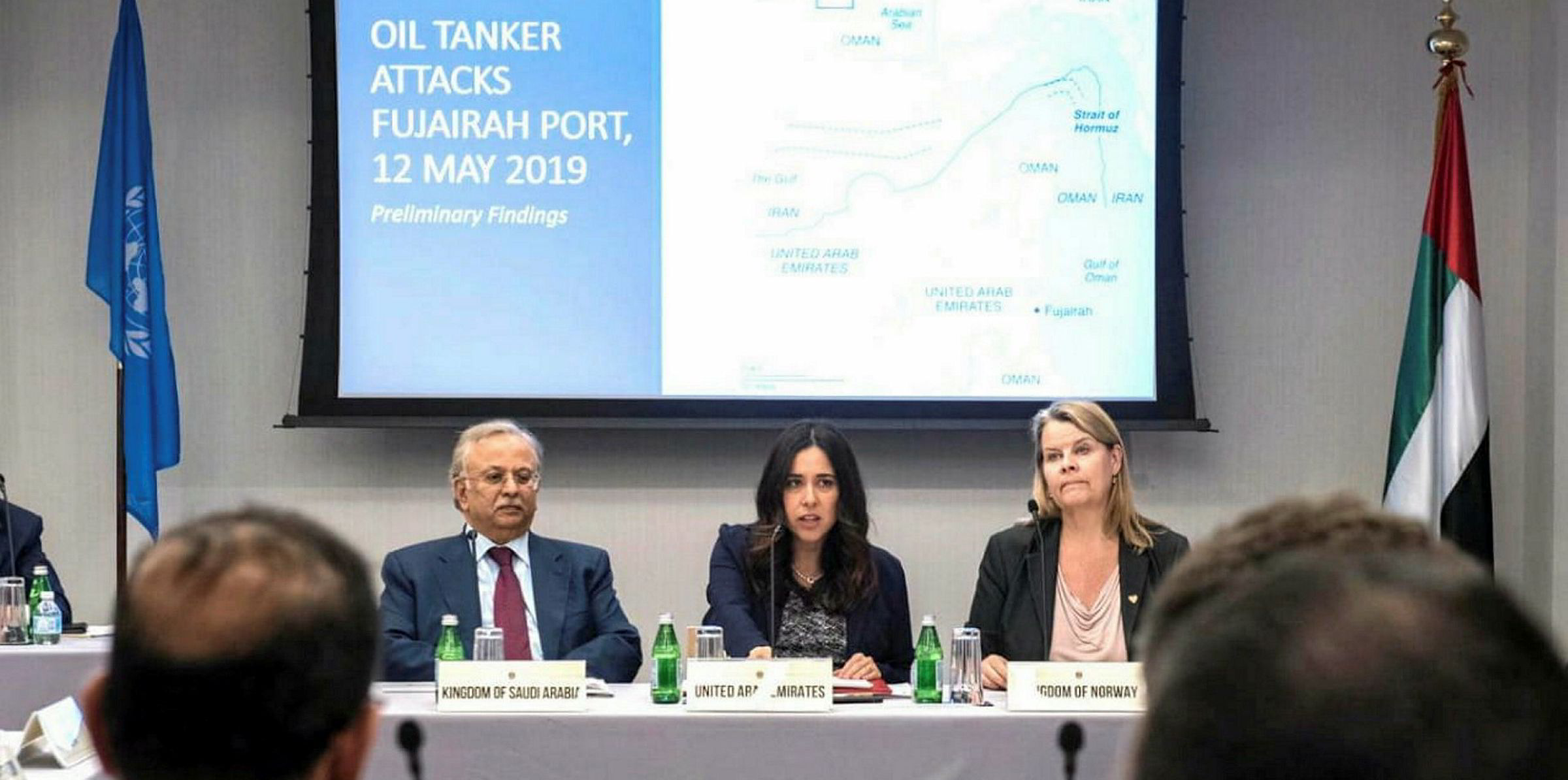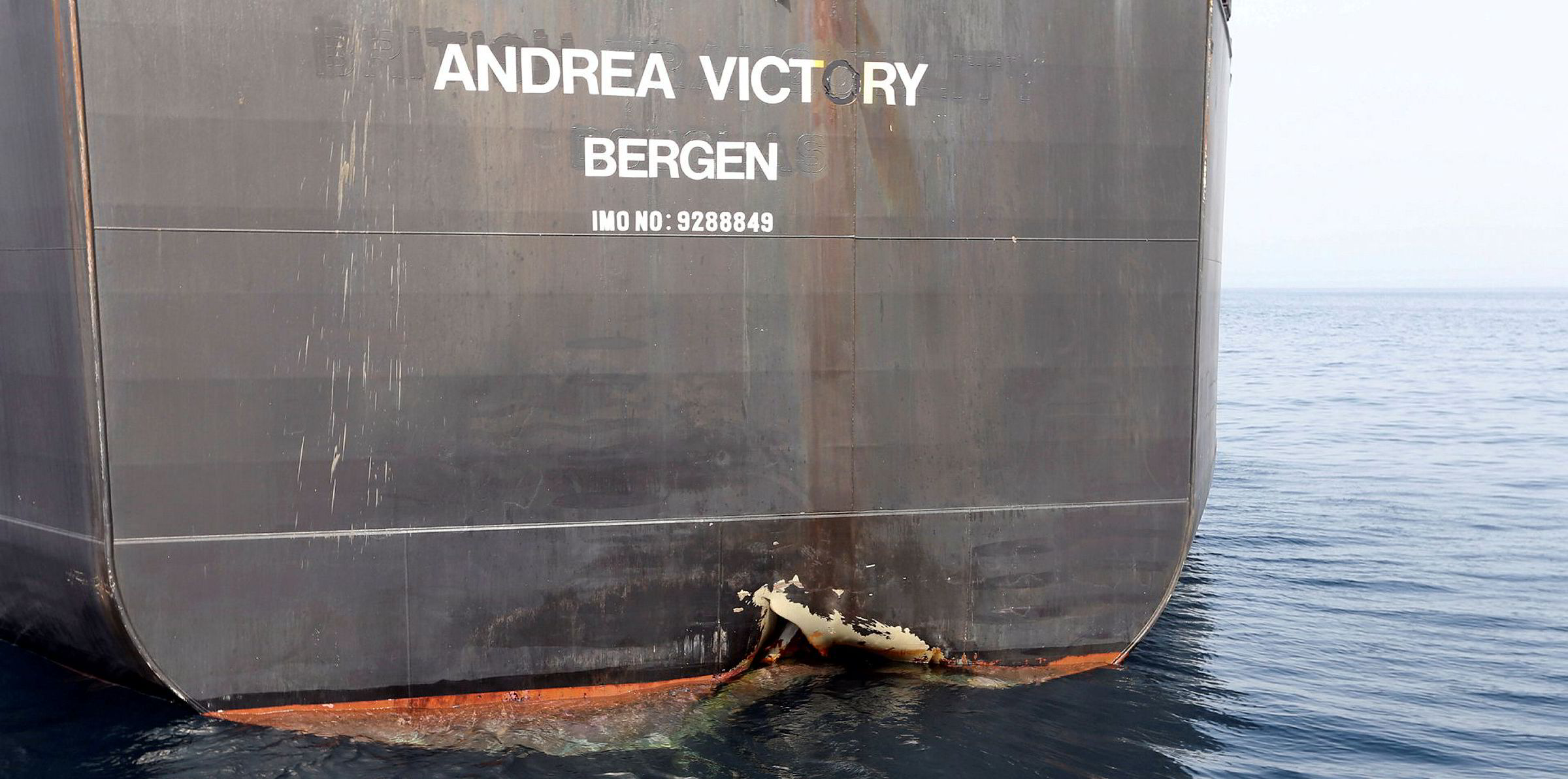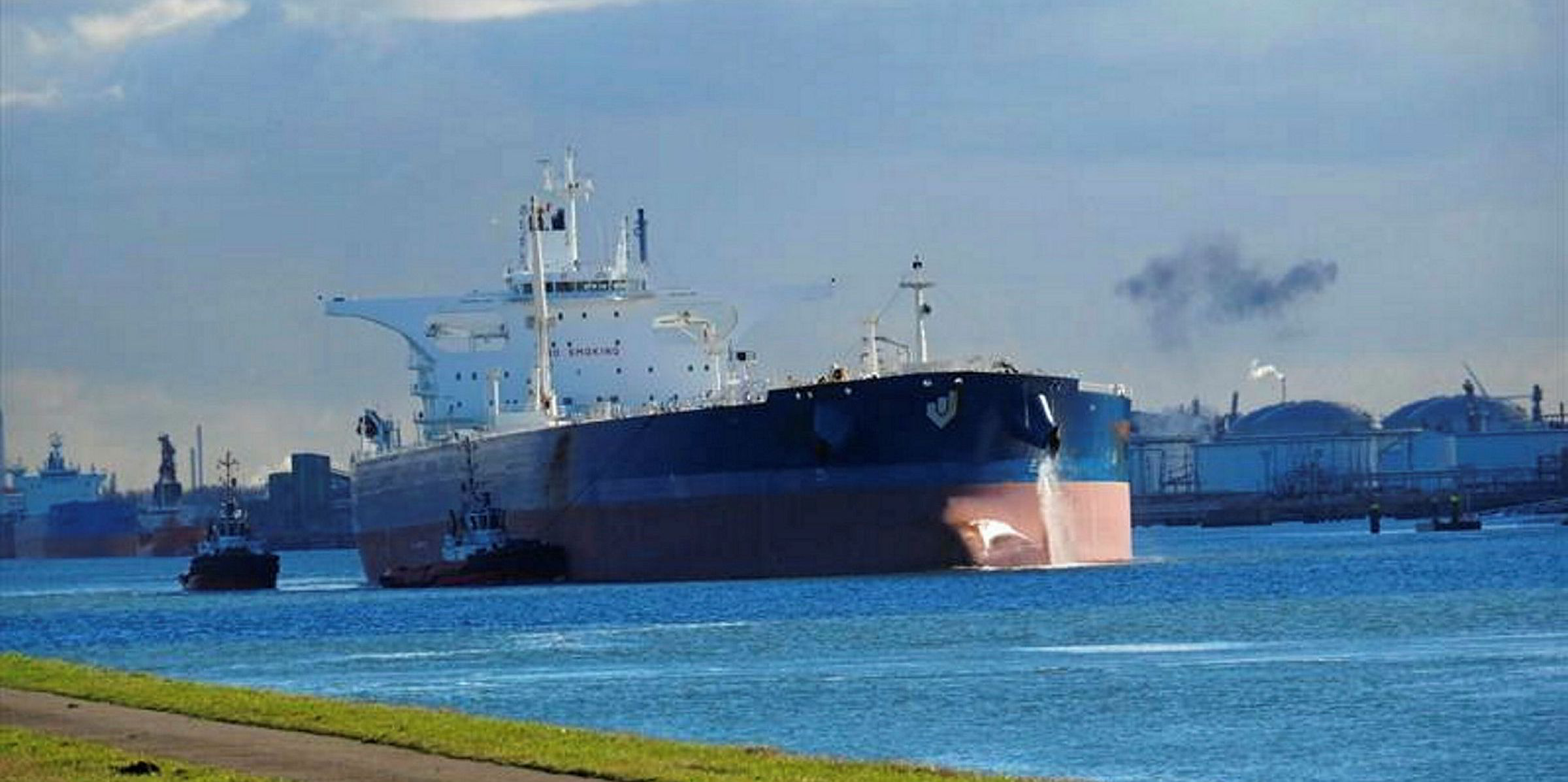A ‘state actor’ was most likely behind the attacks on four tankers off Fujairah last month, a preliminary investigation has claimed.
“While investigations are still ongoing, these facts are strong indications that the four attacks were part of a sophisticated and coordinated operation carried out by an actor with significant operational capacity, most likely a state actor,” the United Arab Emirates (UAE)-led probe said.
The findings were presented to the United Nations Security Council late on Thursday in a briefing by the permanent representatives to the UN from the UAE, Norway and Saudi Arabia.
Limpet mines
The assessment of the damage to the four vessels and the chemical analysis of the debris recovered revealed that it was “highly likely” that limpet mines were used in the attacks on 12 May 2019.
“Based on the evaluation of radar data, and the short time several of the targeted vessels had been at anchor prior to the attacks, it appears most likely that the mines were placed on the vessels by divers deployed from fast boats,” the report said.
“The attacks required intelligence capabilities for the deliberate selection of four oil tankers from among almost 200 vessels of all types that lay at anchor off Fujairah at the time of the attacks.
“One of the targets was at the opposite end of the anchorage area from the other ships, which indicates that these were premeditated strikes, rather than targets picked at random.”
The UAE-led probe said the attacks “likely required the positive identification of these pre-selected targets by the operatives carrying out the attacks”.
The attacks required a high degree of coordination among what most likely were several teams of operatives
Preliminary report
Expert saboteurs
“The attacks required trained divers; the explosive charges were placed with a high degree of precision under the waterline, in ways that were designed to incapacitate the ships without sinking them or detonating their cargoes – indicating minute knowledge of the design of the targeted ships,” it said.
“The attacks required a high degree of coordination among what most likely were several teams of operatives. This included the timed detonation of all four explosive charges, sequenced within less than an hour.”
The UAE-led probe said the attacks also required the “expert navigation of fast boats”, with understanding of the geographic area, that were able to “intrude into UAE territorial waters and to exfiltrate the operatives” after delivering the explosive charges.

The UAE, Norway, and Saudi Arabia said they intend to share their preliminary findings with the International Maritime Organization.
Last month, the Norwegian Shipowners' Mutual War Risks Insurance Association said the attacks were likely to have been carried out by underwater drones.
The ships damaged in the attacks were the Bahri-owned 299,000-dwt VLCC Amjad (built 2017), the 105,000-dwt aframax Al Marzoqah (built 1999), the 47,000-dwt crude tanker Andrea Victory (built 2005) and the UAE-flagged bunker vessel A.Michel.




